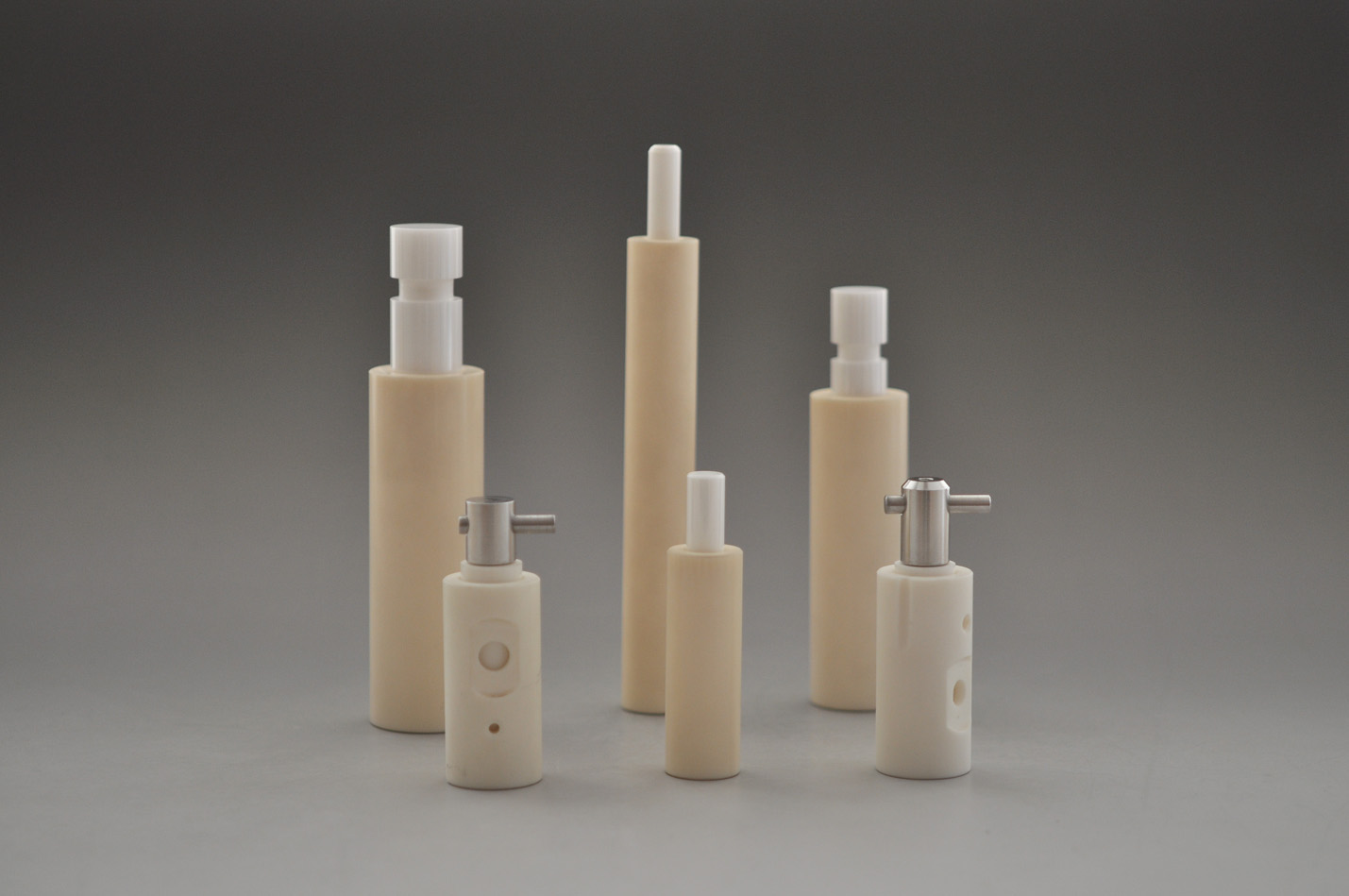News center
Contact us
Dongguan Ji kerr automation Technology Co., LTD
Telephone:0769-83328418
Fax:0769-83328428
Email:[email protected]
Address:80 Luxi Road, Xixi Village, Liaobu Town, Dongguan City, Guangdong Province

trade news
Home > News center > trade news
News center > trade news
Ceramic injection pump, pump valve material subdivision and performance
Date:2018-11-13 browse:652

Commonly used special ceramic materials
According to different uses, special ceramic materials can be divided into structural ceramics and functional ceramics.
Alumina ceramics
The main component of alumina ceramics is Al2O3, and the company uses 996 alumina. Alumina ceramics have various excellent properties.
High temperature resistance, generally can be used for a long time at 1600℃, corrosion resistance, high strength, high wear resistance.
It is widely used in ceramic substrates, structural ceramic parts, sealing rings, etc.
Silicon nitride ceramics
The main component of silicon nitride ceramics is Si3N4, which is a kind of high temperature strength, high hardness, wear resistance,
corrosion resistance and self-lubricating high temperature ceramics, linear expansion coefficient is the smallest in various ceramics,
the use temperature is as high as 1400℃, with excellent corrosion resistance, in addition to hydrofluoric acid, resistant to other acids corrosion,
and alkali, corrosion of various metals. And has excellent electrical insulation and radiation resistance. It can be used as high temperature bearings,
sealing rings for use in corrosive media, thermocouple bushings, and metal cutting tools.
Silicon carbide ceramics
The main component of silicon carbide ceramics is SiC, which is a kind of high strength, high hardness of high temperature ceramics,
1200℃~1400℃ can still maintain high bending strength, is the highest high temperature strength of ceramics,
silicon carbide ceramics also have good thermal conductivity, oxidation resistance, electrical conductivity and high impact toughness.
It is a good high-temperature structural material, which can be used for rocket nozzle nozzle, thermocouple sleeve,
furnace tube and other parts working at high temperature. The thermal conductivity can be used to make heat exchange materials at high temperatures;
Use its high hardness and wear resistance to make grinding wheels, abrasives and so on.
Zirconia ceramics
Zirconia ceramics are widely used in the field of structural ceramics because of their high toughness,
high bending strength and high wear resistance, excellent thermal insulation performance and thermal expansion coefficient close to steel.
Zirconia toughened Alumina Ceramics (ZTA)
Zirconia toughened alumina ceramic (ZTA) material: with high hardness, strength, fracture toughness and corrosion resistance,
can meet the requirements of service conditions. At the same time, in the manufacturing process can adapt to such as molding,
sintering, processing and other technical requirements. The gel injection molding technology has the characteristics of high density,
uniform body, high strength and quasi-net size molding.
Feature Items | Al2O3 | ZrO2 | SiC | Si3N4 | |
colour | white | white | black | Black ash | |
purity | % | 99.7 | 3Y—TZP | — | — |
use | Corrosion resistance, wear resistance | Wear resistance, corrosion resistance | Wear resistance, heat, corrosion resistance | Wear-resistant, heat-resistant, corrosion-resistant | |
density | Kg/m3×103 | 3.93 | 6 | 3.2 | 3.25 |
Water absorption | % | 0 | 0 | 0 | 0 |
HV hardness | GPa | 18 | 13.2 | 22 | 16 |
Bending strength | MPa | 390 | 1200 | 400 | 700 |
Compressive strength | MPa | 2300 | 3500 | — | 3800 |
Modulus of elasticity | GPa | 375 | 200 | 430 | 290 |
Fracture toughness | Mpa/m | 4 | 7 | 4 | 5 |
Coefficient of thermal expansion | ×10-6/℃ | 7 | 10 | 3.7 | 2.6 |
Thermal conductivity | W/(m·K) | 33 | 3 | 60 | 20 |
Maximum operating temperature | ℃ | 1600 | 200 | — | — |
Heat shock resistance | ℃ | 200 | 200 | 400 | 550 |
Dielectric strength | V/m×106 | 18 | 11 | — | — |
Dielectric constant | — | 9.7 | 33 | — | — |
Dielectric loss coefficient | ×10-4 | 10.06 | 520 | — | — |
Nitric acid(HNO?) | Wt Loss mg/cm2/D | 0.15 | 0.1 | 0.02 | 0.05 |
vitriol(H2SO4) | Wt Loss mg/cm2/D | 0.04 | 0.5 | 0.009 | 0.2 |
Aluminium hydroxide(Al(OH)3) | Wt Loss mg/cm2/D | — | 1 | 0.01 | 0.3 |

